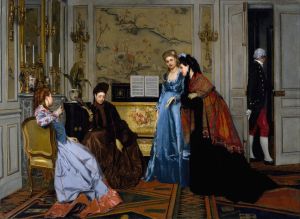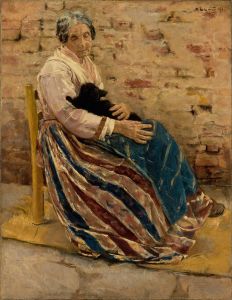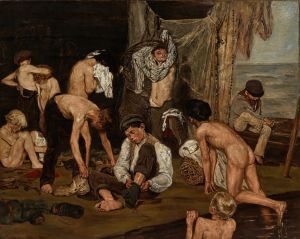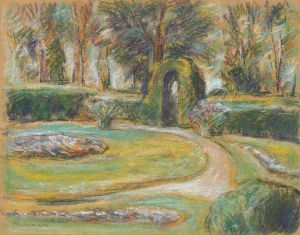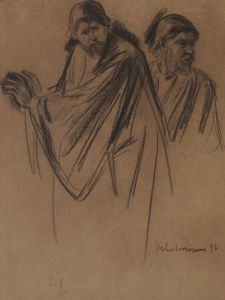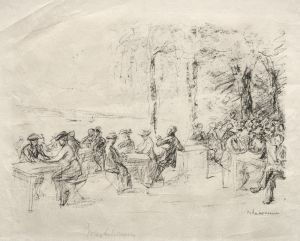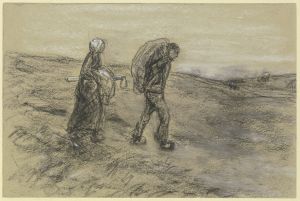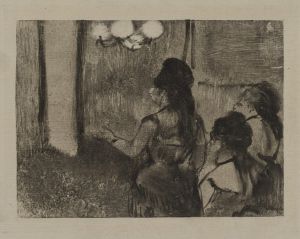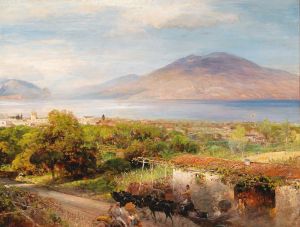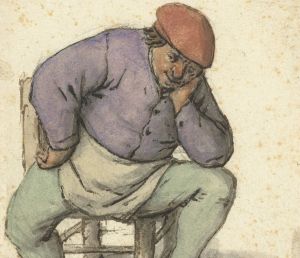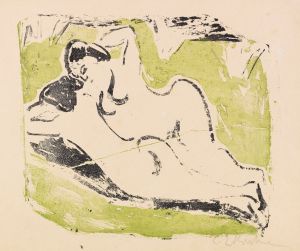
Studie zu dem Wandgemälde; Sommer
A hand-painted replica of Max Liebermann’s masterpiece Studie zu dem Wandgemälde; Sommer, meticulously crafted by professional artists to capture the true essence of the original. Each piece is created with museum-quality canvas and rare mineral pigments, carefully painted by experienced artists with delicate brushstrokes and rich, layered colors to perfectly recreate the texture of the original artwork. Unlike machine-printed reproductions, this hand-painted version brings the painting to life, infused with the artist’s emotions and skill in every stroke. Whether for personal collection or home decoration, it instantly elevates the artistic atmosphere of any space.
Max Liebermann (1847-1935) was a prominent German painter and printmaker, known for his role in the development of German Impressionism. One of his notable works is "Studie zu dem Wandgemälde; Sommer" (Study for the Mural; Summer), which showcases his adept skill in capturing light and atmosphere.
"Studie zu dem Wandgemälde; Sommer" is a preparatory study for a larger mural project. Liebermann was often commissioned to create murals and large-scale works, and studies like this one were essential in planning the composition, color palette, and overall execution of the final piece. The study reflects Liebermann's keen observation of nature and his ability to translate the vibrancy of the summer season onto canvas.
The painting depicts a serene summer scene, characterized by lush greenery and a tranquil atmosphere. Liebermann's brushwork is loose and expressive, capturing the fleeting effects of light and shadow. The use of bright, natural colors conveys the warmth and vitality of the summer months. This study likely served as a crucial step in Liebermann's creative process, allowing him to experiment with different elements before committing to the final mural.
Max Liebermann was a leading figure in the Berlin Secession, an art movement that sought to break away from the conservative academic standards of the time. His work was heavily influenced by French Impressionism, and he was known for his depictions of everyday life, leisure activities, and landscapes. Liebermann's contributions to art extended beyond his own creations; he was also an influential teacher and mentor to younger artists.
Throughout his career, Liebermann faced significant challenges, particularly during the rise of the Nazi regime in Germany. As a Jewish artist, he was subjected to increasing persecution, and his works were labeled as "degenerate art." Despite these hardships, Liebermann's legacy endured, and his works continue to be celebrated for their technical mastery and emotional depth.
"Studie zu dem Wandgemälde; Sommer" exemplifies Liebermann's ability to capture the essence of a moment in time. The study not only provides insight into his artistic process but also stands as a testament to his enduring talent and vision. Today, Liebermann's works are held in high regard and can be found in major museums and collections around the world, where they continue to inspire and captivate audiences.
In summary, "Studie zu dem Wandgemälde; Sommer" is a significant work by Max Liebermann that highlights his skill in capturing the beauty of the natural world. This preparatory study played a vital role in the creation of a larger mural, showcasing Liebermann's meticulous approach to his art. Despite the challenges he faced, Liebermann's contributions to the art world remain influential, and his works are celebrated for their beauty and emotional resonance.







